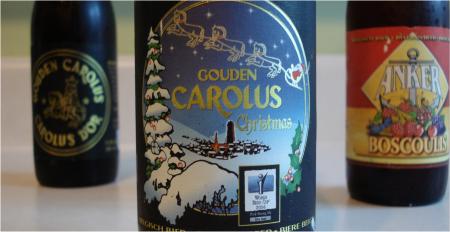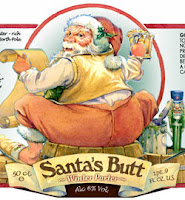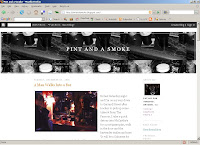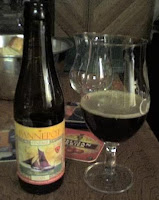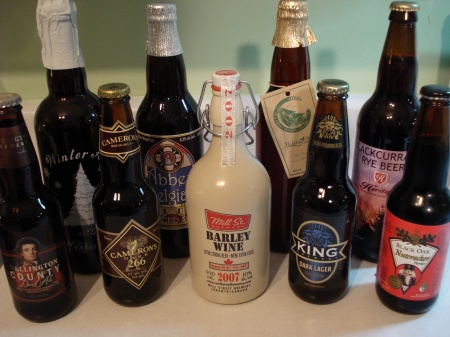
Back in mid-December, I received a media pack from the Ontario Craft Brewers containing eight holiday/seasonal/dark beers. For a number of reasons, I was pretty slow to drink them all, with the final bottle finally being cracked a couple of nights ago (although I wish I had opened it sooner, for reasons noted below…), so the review round-up I promised would “follow soon” at the time has taken a bit longer than expected. Better late than never, right?
So, in the order of appearance in the photo above…
Wellington County Dark Ale
Chestnut-brown with a small off-white head. Toasty malts on the nose, with some toffee and chocolate. Medium bodied, and a well rounded malt flavour with notes of caramel/brown sugar, chocolate, and an odd hint of red wine. (Just see if I was imagining it, I checked my notes from a few years ago, and I noticed it then as well.) Mild hops in the finish are a bit earthy. A pleasant beer that straddles the line between a traditional UK pale ale and a nut brown.
Great Lakes Winter Ale
To quote myself: “A strong (6.2%) and malty ale spiced with cinnamon, ginger and orange peel. It has a rich ruby-orange colour and a sweet aroma with hints of fruit cake and caramel. The flavour starts quite sweet as well, but turns pleasantly spicy in the finish, with the orange peel and ginger being especially prominent as it warms up. This spiciness seems more up-front than I recall in last year’s version, but that’s quite alright, as it gives the beer a distinctive and enjoyable edge.”
Camerons Dark 266
A dark lager with a slightly murky ruby-brown colour. Nice aroma, with a good chocolate malt character with a bit of brown sugar. Similar malty sweetness in the flavour, followed by a bit of smoke, and a fresh hop finish. Medium bodied, quite suitable for the style. Like Waterloo Dark, it’s a fairly simple but enjoyable beer that is a good introduction for people who don’t think they like dark beers.
Trafalgar Abbey Belgian Spiced Ale
This is the last of the batch I tried, but I should’ve known better and opened it back in December in hopes of it being drinkable. Alas, like many Trafalgar beers I’ve tried in the last couple of years, it was infected despite being three months ahead of the supposed “best before date”, and had an aroma and flavour that sat somewhere between old sweat socks and pickle brine. It’s such a shame that a brewery with such an eclectic line-up has such poor quality control, as they’re really doing a disservice to themselves and Ontario’s craft brewers in general. Perhaps they should spend less time on their rebranding gimmicks and more time getting their core beers into a more stable condition before shipping them out.
Mill Street Barley Wine
Quoting myself again: “It has a clear, deep golden-orange colour with a good sized white head. The aroma has the sweet maltiness expected from the style, with a strong caramel character, but also a lot of orange/citrus notes that I don’t remember from the older versions. The flavour is very sweet off the top, with some spice and pepper in the middle, and strong orange peel in the finish along with a whisky-like heat that builds in intensity as the beer warms up.”
Old Credit Holiday Honey
Old Credit is one of those breweries that I rarely think about. Based in Port Credit, they have two year round brands: a “pilsner” which is more of a pale lager, and an “amber ale” which is essentially a Rickard’s Red clone. Microbrewed beer for mainstream tastes, I suppose. So I didn’t expect much from their holiday beer which is apparently available only from the brewery, and those moderate expectations were well met. It has an amber colour with a wispy head, and a simple, one-dimensional sweet malt aroma and flavour, with a faint hint of honey. It’s not offensive in any way – in fact, it’s inoffensive almost to a fault. And it has absolutely nothing in it that says “holiday” to me.
King Dark Lager
The first time I tried this beer a few years ago, I wasn’t that impressed. I guess I expected a dark beer to have a full body with big flavours. Since then, I’ve come to appreciate more subtle “dark” beer styles like dunkel, and realize now that King Dark Lager is a very good crack a that style. It pours a nice caramel-amber with a small off-white head. The aroma is malty, with notes of coffee and bread, and a grassy hops. Medium mouthfeel, and a very nice nutty malt flavour with hints of coffee and toffee, and a moderately hopped finish. Great stuff, especially if you get it fresh.
Heritage Black Currant Rye
Two years ago, this beer was a lager that was first made available at Volo Cask Days, and later as a limited bottle release. Last year, it became an ale that was, frankly, pretty bad. This year, it’s an ale again, but it’s been reformulated with some help from Perry Mason of Scotch-Irish, and it’s much better for it. Pretty ruby colour with a good size pink head. Great balance of malt and sweet-tart fruit in the aroma, while the flavour has a mild malt profile with a nice infusion of red currant. It’s a good fruit beer that’s sweet without being too sweet, but it’s also an odd choice for a winter seasonal – it really seems more summery to me.
Black Oak Nutcracker
This beer wasn’t actually part of the promo package, but I added it to the picture in order to make it more symmetrical, and to add another true winter/holiday beer to a somewhat slapdash selection. Nutcracker is a rich and robust porter laced with cinnamon, and it’s annual release is a highlight of my holiday season every year. That anticipation is one of the indicators of a great seasonal beer, and it’s also the reason that Nutcracker would’ve been a great addition to this package. Ah well, there’s always next year…

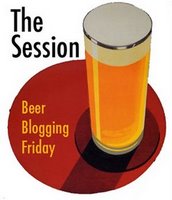 It’s the first Friday of the month, and therefore time for another Session, when beer bloggers far and wide all make a post about a particular beer style or topic. This month, we’re being hosted by tedo at
It’s the first Friday of the month, and therefore time for another Session, when beer bloggers far and wide all make a post about a particular beer style or topic. This month, we’re being hosted by tedo at 